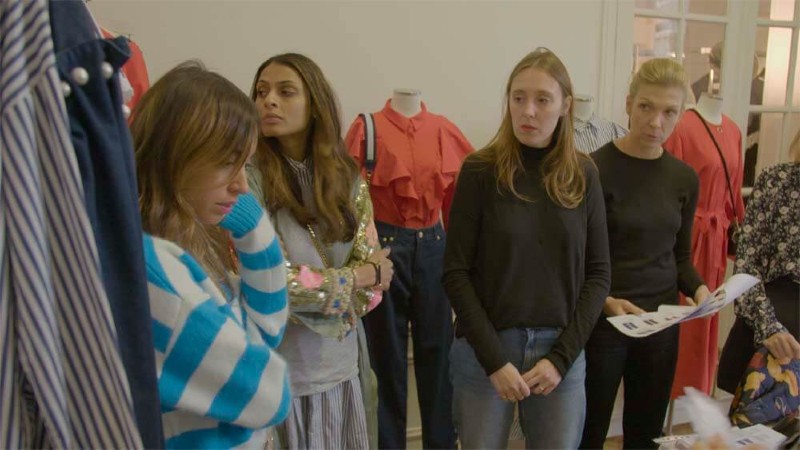




British countryside girl Amy Powney was brought up in a caravan without water, gas and electricity. In just over a decade she moved from sweeping floors to Creative Director at fashion powerhouse Mother of Pearl. Her ascension wasn’t just an impressive personal achievement. She changed the way the organisation works, ensuring that production is environmentally sustainable and socially responsible. In one her first and most controversial measures, she cut down the number of yearly collections from four two just two. Her novel tactics raised some eyebrows, in an industry used to opulence and extravagance.
The first impression we get is that high fashion and sustainability are just thoroughly incompatible. Ostentatiousness precludes frugality. The “organic” label has been banalised, having very little significance. “People say what you wanna hear”, Fashion Reimagined clarifies. So Amy sets out to make a real difference.
We learn that a garment travels, on average, five countries before it reaches its final destination. It is often impossible to trace the source of the materials: fleece, cotton, wool, yawn, etc. The wool from British sheep is too coarse for human consumption Except for the sheep from one female farmer on the Southern coast of England. Amy travels inside the UK and the world in search of eco-friendly materials and solutions. She finds a sustainable farm in Uruguay, but they have production issues. Then she travels to Peru, but there too there are barriers to overcome: insalubrious working conditions (cheap labourers harvest copious amounts of toxic raw materials with their bare hands). Turkey looks promising, but yet again Amy learns the hard way that not all that glitters is gold.

Inspired by Naomi Klein’s seminal book No Logos, about the destructive power of superbrands, Amy creates No Frills, a brand a”sustainable from beginning to end”. This is includes harvesting, safety of workers, animal treatment, environmental impact and more. While this does not sound particularly revolutionary, Amy says that her teachers at Kingston University dismissed her ideas as too frivolous less than two decades ago. Until recently, there were virtually no voices calling for eco-solutions in the fashion world, except for Amy and veteran Katherine Hamnet. This has now changed, with big names such as Vogue, H&M and Zara embracing the environmental agenda.
In its final quarter, this 100-minute film reveals the “pledges” that eco-friendly consumers should make: the “OAP (old-age purchaser)” only buys second hand, while the “fixer” always repairs their clothes, and the “rent girl” hires her clothes, all of them helping to minimise waste. This is the film’s most interesting, most educational and most practical part. Conscientiousness starts at home. Otherwise, Fashion Reimagined is neither particularly sobering nor particularly audacious. It is a well-intentioned but also highly romanticised documentary. It fails to denounce the big culprits, to hold big firms accountable for the damage they continue to inflict on our planet. This is more of celebratory than a denunciation piece of filmmaking.
At the very end, we learn that the fashion industry is forecast to grow 60% by 2030, putting unprecedented strain on the planet. A rather gloomy prospect. Can “rent girl” and ‘fixer” do anything in order to avert disaster, or are their actions just too small and insignificant? I would love to have the answer. Fashion Reimagined does not seem to know it, either. In all fairness, probably nobody does.
Fashion Reimagined is in cinemas on Friday, March 3rd.






